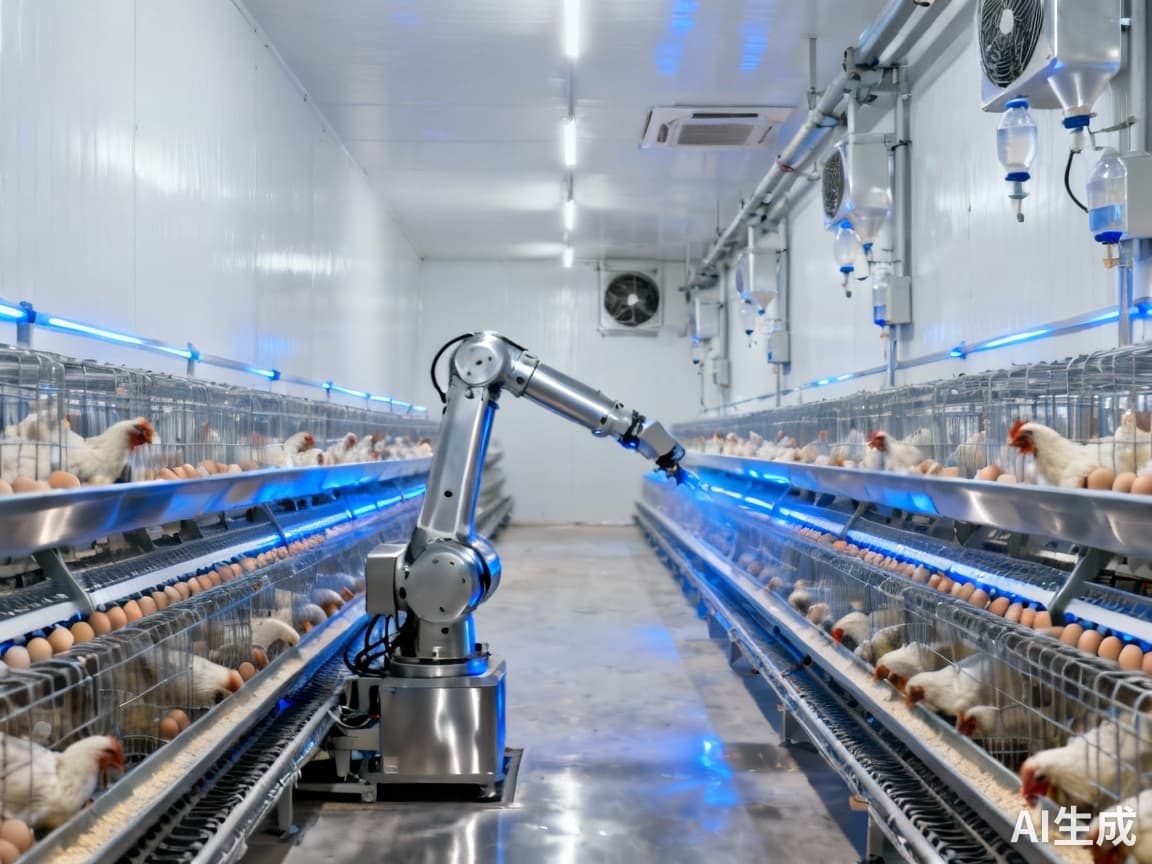Automated Poultry Systems Cut Costs 48% & Reshape 2025 Farm Economics #29
Automation drives 48% of poultry equipment revenue by 2025, with feeders peaking at 100 units and waterers surging to 41. Projects like Dubai Layer cut per-bird costs and ensure ROI in 3 years, reshaping farm economics.

Redefining Poultry Profitability: How Automated Caging Systems Transform Operational Economics
The poultry farming equipment market is undergoing a fundamental transformation, with automation projected to contribute 48.0% of market revenue share in 2025 according to Future Market Insights. While many focus on surface-level efficiency gains, the real story lies in how automated systems are fundamentally reshaping farm economics, risk management, and operational models across operations of all sizes.
Beyond Efficiency: The Hidden Value of Automation
Traditional ROI calculations often miss the strategic value of automation. The market data reveals deeper shifts: automatic chicken feeder demand peaks at 100 in August 2025, while automatic waterer adoption rises from 0 to 41 by May 2025. This isn't just about convenience—it represents a fundamental change in operational patterns and risk distribution.
The Dubai Layer Project demonstrates this transformation at scale. Their implementation across 15 pens with 30,000 birds per pen achieved predictable ROI within three years through reduced per-bird costs and tightened quality control. As one project manager noted: "The value isn't in the equipment itself, but in the operational consistency it enables."
Small-Scale Breakthrough: Challenging Conventional Wisdom
The most significant revelation comes from Jiayu County's Green Mountain Ecological Layer Farm, where a 65,000-bird operation achieved full automation despite conventional wisdom that such systems only benefit large-scale operations. Their implementation included:
- Stacked cage breeding systems with wet curtain fans
- Automatic feeding machines and egg collection systems
- Belt-type manure removal equipment
- Hot-dip galvanized surface treatment for durability
The results were transformative: 3.8 tons of daily egg production generating 24,000 RMB in daily revenue, all while enabling ecological agriculture integration. Their success proves that automation's value extends beyond efficiency to enabling entirely new business models.
Risk Restructuring: The Hidden Economic Advantage
Automation fundamentally changes risk allocation in poultry operations. Traditional farms face significant human capital risks—training challenges, labor availability, and consistency issues. Automated systems transfer these risks to equipment reliability and maintenance schedules, which are more predictable and manageable.
The Jiayu County case demonstrates how hot-dip galvanized equipment reduces maintenance downtime and extends equipment life cycles, creating more predictable operational costs. This reliability enables better financial planning and risk management, particularly valuable for smaller operations with tighter margins.
Implementation Framework: Practical Guidance for Transformation
Based on successful implementations across different scales, here's a structured approach to automation adoption:
- Infrastructure Assessment: Evaluate existing facilities for customization requirements—automation equipment must integrate with current infrastructure
- Phased Implementation: Begin with critical systems like feeding and watering, then expand to environmental controls and manure management
- Customization Planning: Account for 15-20% additional investment in infrastructure adaptation beyond equipment costs
- Maintenance Protocol Development: Establish preventive maintenance schedules for automated systems to ensure reliability
For operations under 100,000 birds, prioritize systems that address labor-intensive tasks first. The Jiayu County model shows that starting with automated feeding and environmental controls delivers the most immediate operational benefits.
Investment Priority Matrix
Different scales require different approaches:
- Small Operations (under 50,000 birds): Focus on labor reduction through automated feeding and egg collection systems
- Medium Operations (50,000-200,000 birds): Implement comprehensive environmental controls and manure management systems
- Large Operations (200,000+ birds): Pursue full integration with data monitoring and predictive maintenance capabilities
The market growth projections support this strategic approach. With the poultry equipment market valued at USD 4.5 billion in 2024 and projected to reach USD 7.1 billion by 2034 at a 4.7% CAGR, early adopters stand to gain significant competitive advantage.
Conclusion: The New Economics of Poultry Farming
Automation is no longer just about efficiency—it's about fundamental business model transformation. The 48% market revenue share projected for 2025 represents a shift from equipment purchasing to operational system investment. Successful operations, from Jiayu County's ecological model to Dubai's large-scale precision farming, demonstrate that the real value lies in rethinking entire operational paradigms rather than simply replacing manual labor.
As the industry continues evolving at 6.0% CAGR through 2035, farms that embrace automation as a strategic transformation rather than a tactical upgrade will lead the market in both efficiency and profitability. The data clearly shows: automation isn't just changing how we farm—it's changing the economic fundamentals of poultry production itself.
Want to know more?
Get in touch with us for more information about our services and products.